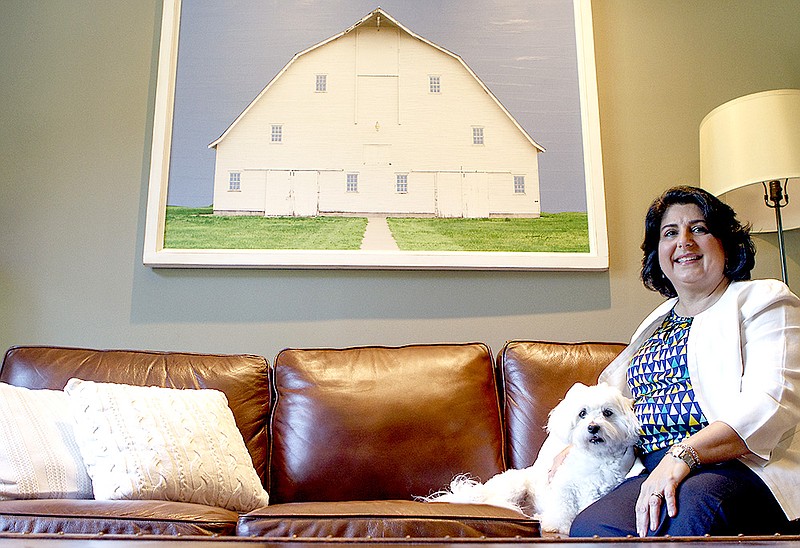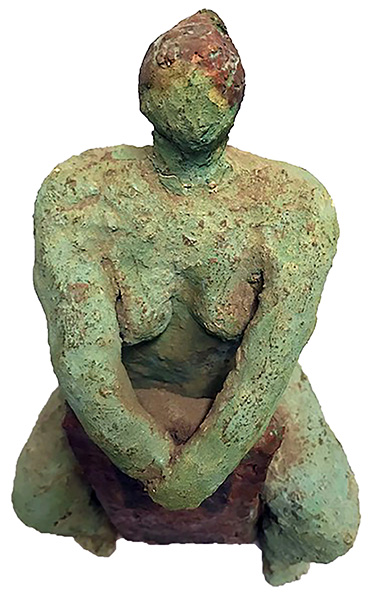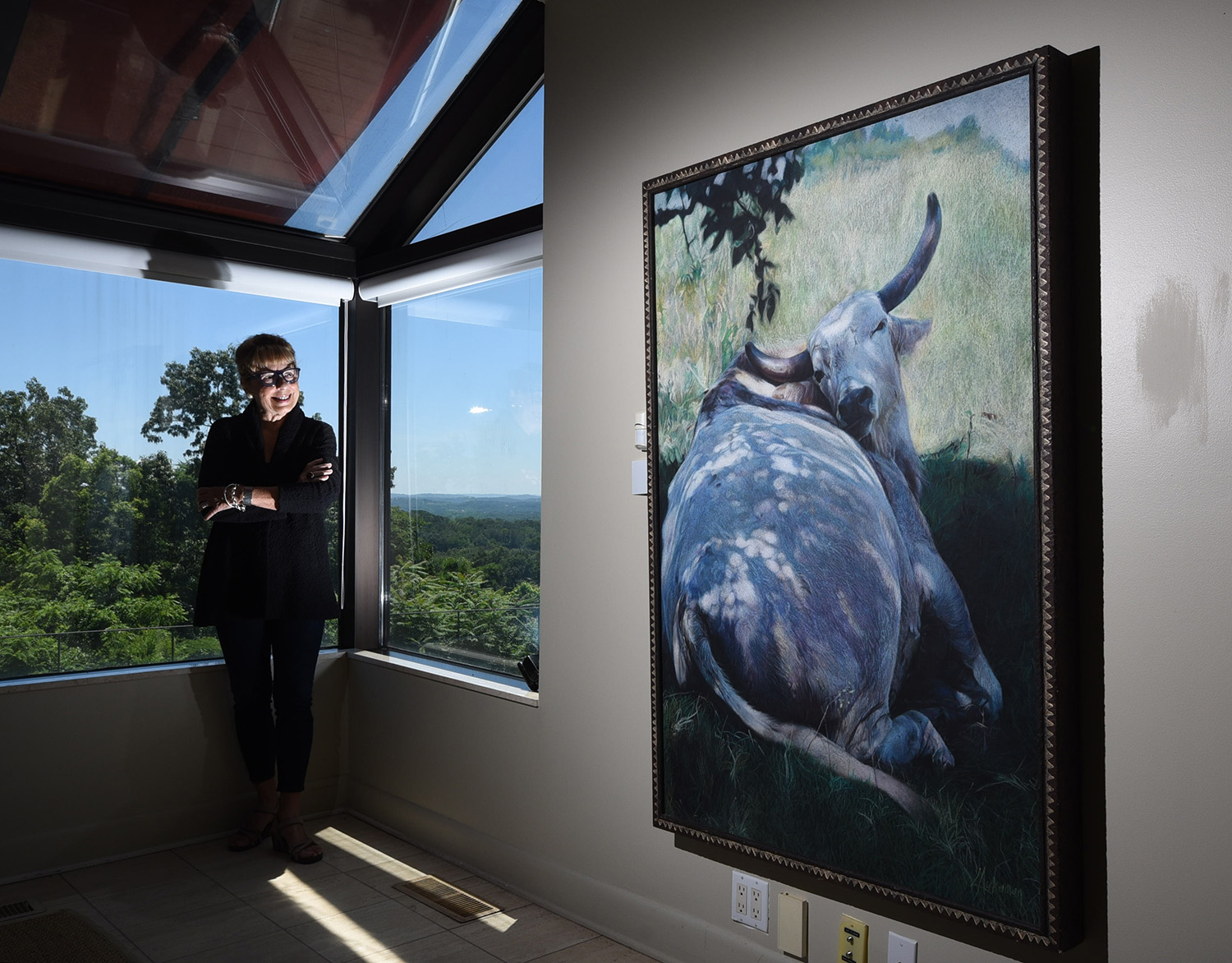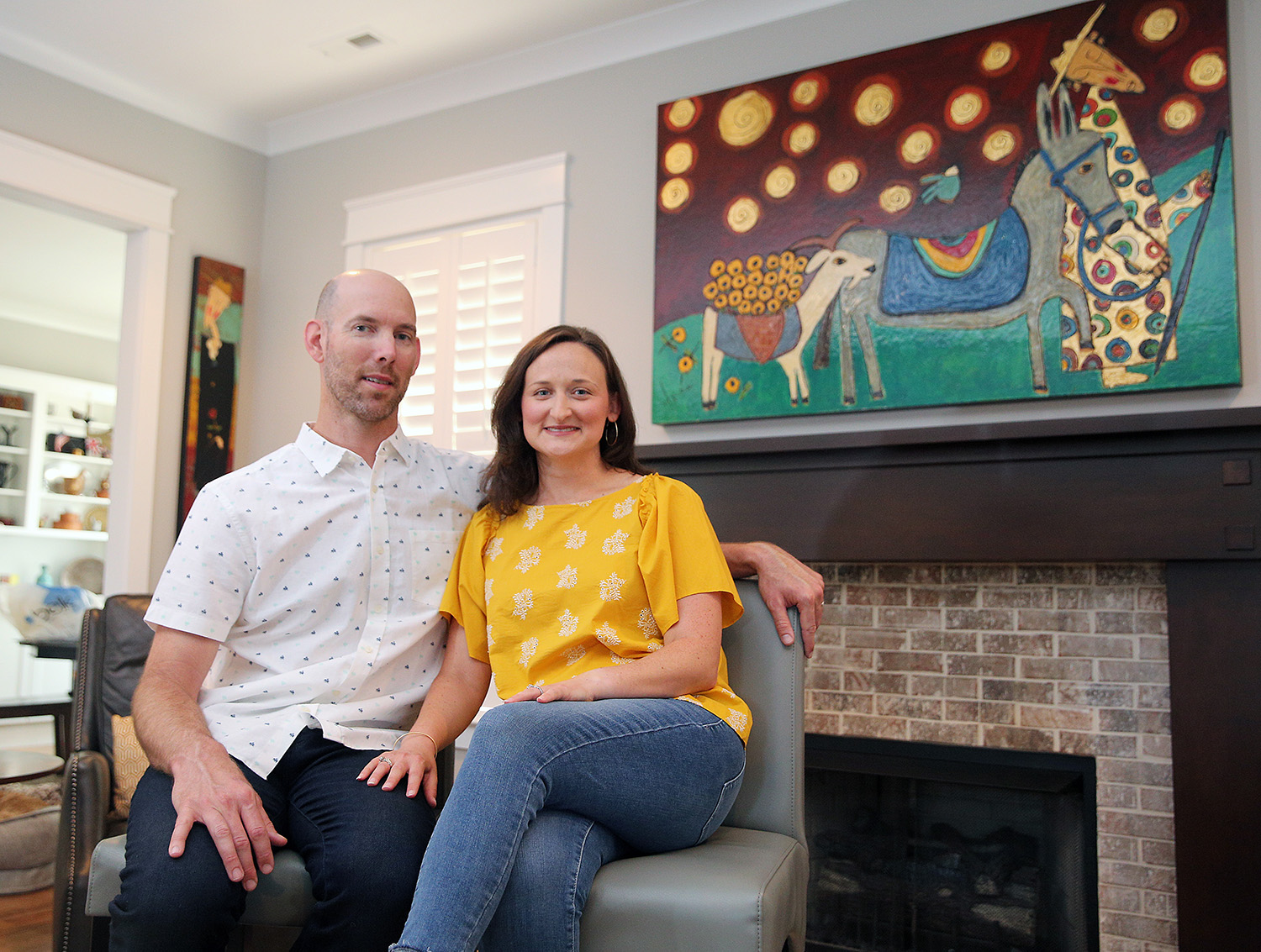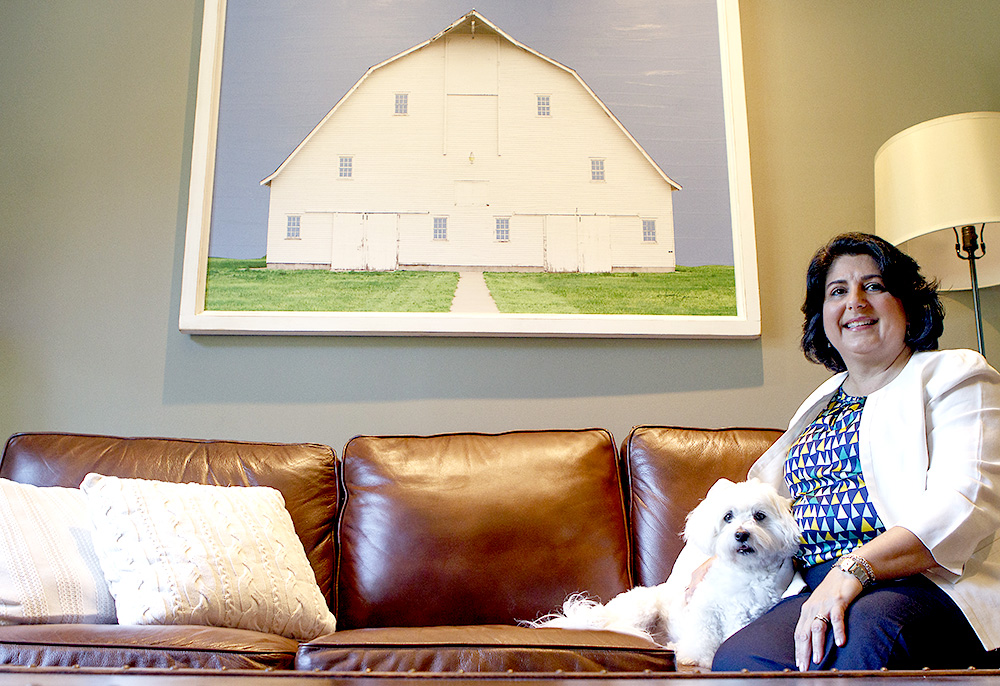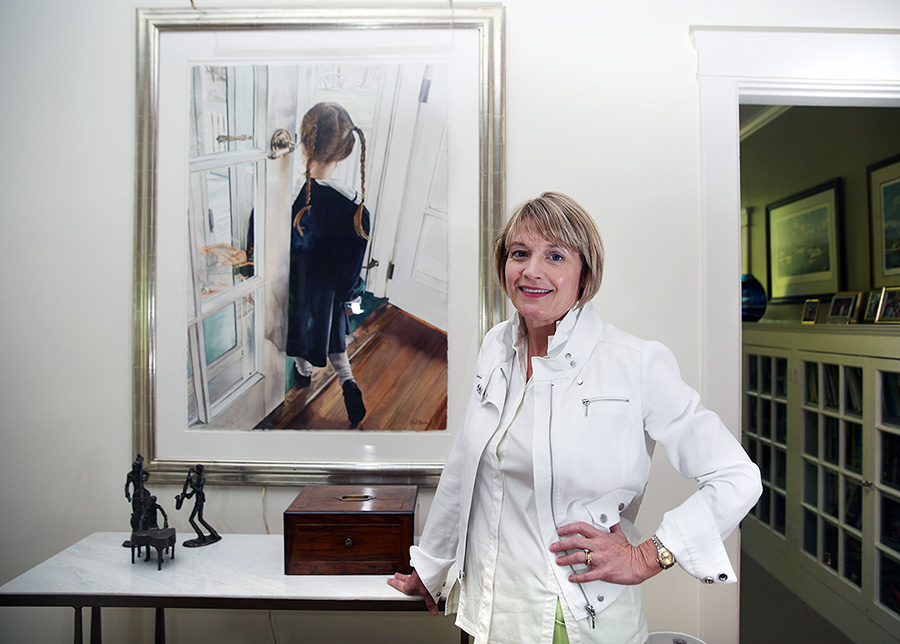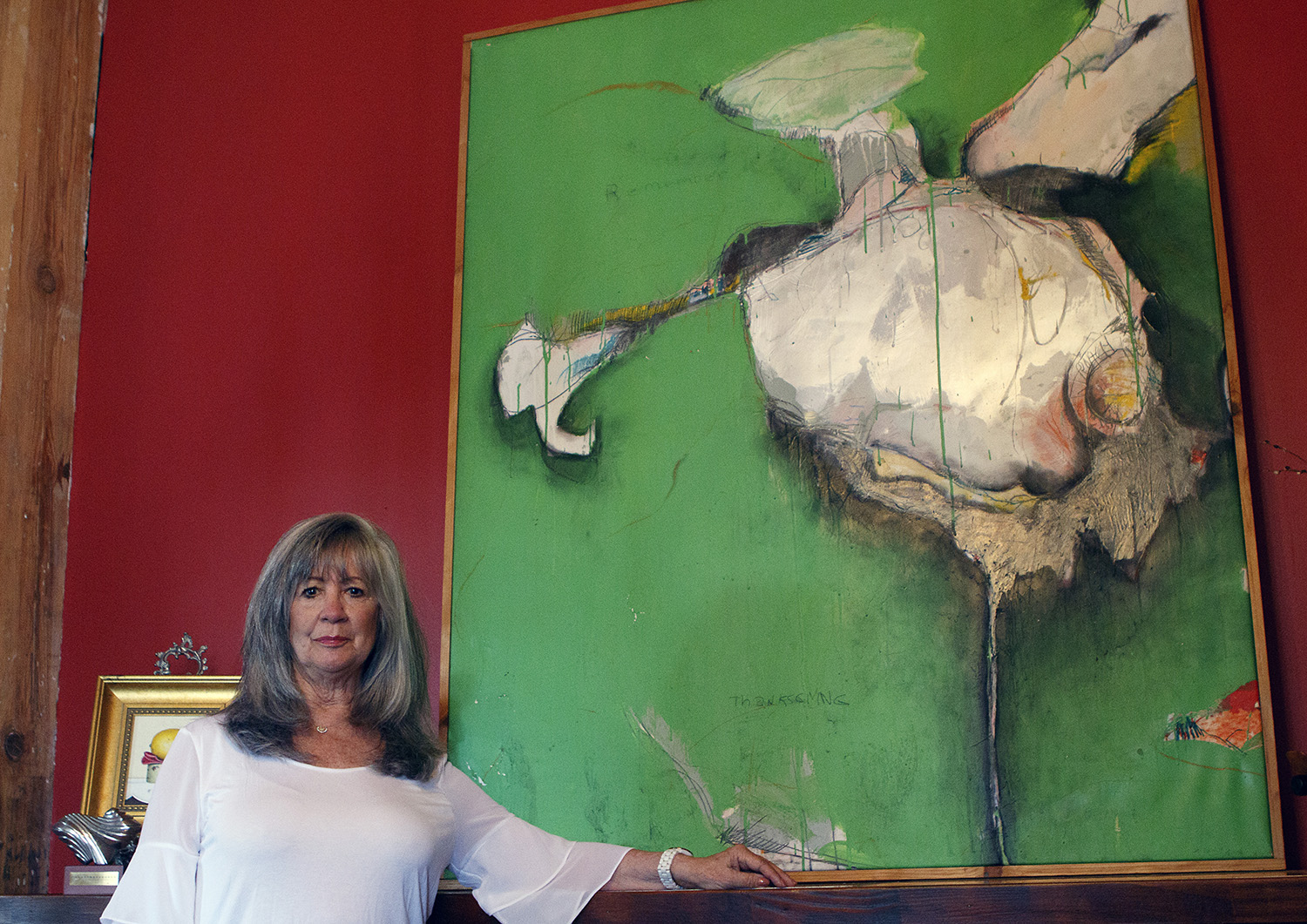Curious about the artworks others hold dear, I talked to a select group of local collectors, some seasoned, some early in the process of investing in art, about their favorite pieces. I wanted to know, of all the pieces they own, which holds a special place in their heart, and why? Was it bought for a particular occasion? From a sentimental place, or from an artist they'd been following? Does the piece simply resonate with them on that profound and wordless level where true art appreciation resides? And if they could own any artwork in the world, regardless of cost or availability, what would they own?
Forty-six-year-old James McKissic, senior adviser and director of multicultural affairs for the city of Chattanooga, started collecting art in the mid-1990s, shortly after college. Of his extensive collection, almost all of which is art by African-Americans, his favorite piece is a 1953 untitled ink on paper by abstract expressionist Norman Lewis.
"Norman Lewis' artistic gifts gave him opportunities to enter segregated arts spaces, and once inside, he worked to open doors for others, which is what I try to do, too," McKissic says. "His life and his work reminds me of the saying often heard in black communities, that we must always 'lift as we rise.' This is probably the piece of art in my collection that I would run back in and save if the house was on fire."
McKissic is intentional in his approach to art collecting. "I don't collect for investment or for decorative purposes," he says. "I collect what I like and what speaks to me. It is a means to connect to my history, and a way for me to preserve African-American art for the future." To this end, he says he often seeks out opportunities to share pieces in his collection with young people " to talk about the art, the artists and how they influenced history and culture."
If he could, he would own paintings by African-American expressionists Alma Woodsey Thomas and Beauford Delaney.
"And as soon as I hit the Powerball, I will!" says McKissic.
Cynthia Nessen was a senior vice president of professional and clinical services at Grady Health System for 10 years. Now retired at 70 years old, she has been collecting art for over half her life.
"Of all the pieces we own, the one that had me at first glance is a painting called 'Dappled Bovine' by Lynn Aukerman," she says.
A 40-by-60-inch oil pastel created in 2000, the painting of a steer hangs in the dining room of the home Nessen shares with her husband, retired architect Bruce Simonton. The piece elicits comments and conversation from almost everyone who sees it - guests, friends, even repairmen.
"I love this very relaxed, magnificent animal, and am reminded of the cows in pastures I saw when I was growing up in Wisconsin," Nessen says of her own reaction to the piece.
Original works are extremely important to her and Bruce, which is obvious to anyone who has been in their art-filled home. As for how they decide what to purchase, she says she tends to select art that "makes me wonder how and why the artist created it."
What one piece of art would Nessen own if she could?
"I would like to own a very large piece of sculpture by Louise Nevelson," she says. The choice of Nevelson, a 20th century American artist who worked in various mediums, including mixed media, seems fitting, given that Nessen's collection includes a wide range of drawings, paintings, textiles, photographs, sculpture, crafts and found objects. While there was a piece of Nevelson's at Faye Gold Gallery in Atlanta that Nessen visited frequently, ultimately the price was too high.
Husband and wife Andrew and Sydney Hopper, 41 and 39, respectively, are just starting their art collection. They are especially excited about their recent acquisition, "Moonflower and Fireflies," a contemporary painting by Birmingham, Alabama, artist Trés Taylor.
In particular, they say, they were drawn to the colors, the nature themes and the spiritual aspect of the monk in the painting.
Like most of Taylor's pieces, this acrylic on tarpaper included an original handwritten fable on the back, with themes of hope, joy and happiness. The monk in the painting, who carries a walking stick, reminds Sydney of her husband, who never hikes without one. "I smile every time I look at the painting," she says.
Sydney, a pharmacist for Memorial Hospital, and Andrew, a lab technician for TVA, admit that before they began collecting art, they just wanted something to put on their walls. Now, however, they say they want "relatable" art; as lifelong science-minded people, they feel it's time to find their "inner artsy side."
They aren't sure yet what their dream art piece might be, but their dream art trip is a visit to the Sistine Chapel.
Martica Lambiase, 57, is an artist and co-chair of the Arts at Erlanger Committee, which, according to its website, "create[s] a healing atmosphere for patients and their guests" and showcases artwork from regional artists, with the idea that art complements "the healing work of Erlanger." While it was hard for her to pick a favorite from her personal collection, she chose "American Beauty on Blue," by Jennifer O'Meara, a mixed media piece that incorporates digital photography and encaustic. It hangs on a wall in her study.
Lambiase spied the piece at the back of a gallery in Aspen, Colorado.
"It stunned me," she says. "It had a warm but almost eerie feeling to it, like something was out of place or not right. It was like I was somewhere safe but kind of teetering on the edge. It made me feel alive." Fascinated by the complex mix of feelings the piece stirred in her, she knew she had to have it.
In addition to having many favorites in her own collection ("they're like children to me!") she also has many favorites out in the world, citing the trompe-l'il works of Albrecht Durer and Leonardo da Vinci, the Tahitian portraits of Paul Gauguin, and the graphic work of Robert Motherwell. If money were no object, she says, she would love to own Leonardo da Vinci's "Portrait of a Lady from the Court of Milan" or "Lady with an Ermine." But if she were to take out a loan to purchase a piece, she would purchase a Maxfield Parrish or Roy Lichtenstein. "They are both graphic designers by trade, and their background in commercialism influenced their images and style of art," she says of their appeal.
In regards to art's effect on the soul, Lambiase says " you can try to be clinical and say it's the quality of the composition or the purity of the brushstroke, but I think your average person just likes art for the feeling it imparts when they look at it. I learned a long time ago that the worth of an object is based on how much pleasure it gives you. It doesn't need to be a Picasso to be valuable to you. If that Elvis painting on velvet brings you to tears, then that's what makes that piece of art priceless for you."
Paralegal Mary Beth Bode, 58, and her husband, attorney John Bode, also 58, got their start collecting art when John's parents gifted them pieces from their own collection. They purchased their first piece of art at the Hunter Museum of American Art's "Spectrum" exhibit in the early 1990s. Now their large collection fills up their Riverview home.
Of all the art they now own, they say they are most drawn to a transparent watercolor painting on handmade paper by New York artist Michelle Murphy. Called "Reluctant Sailor," it was purchased at another "Spectrum" silent auction in the mid-1990s.
"When we bought it, our daughter was a little girl, and the girl in the painting reminded us of her. There's an innocence about the piece; it seems like there's a story behind the way she's standing, hanging back, a wonderment," says Mary Beth.
When they were renovating their current house, they had to move into a tiny, furnished apartment, and the only thing they brought with them besides their clothes and personal effects was this painting.
"Once our house was renovated, we realized the doorway in the painting looked just like the one we had created!" she adds. The piece hangs in the living room adjacent to the doorway it mimics.
For Bode, art brings joy and makes a home unique. "We've never regretted an art purchase," she says. "We might not know where we're going to put it, but we never regret buying it."
If she could have any artwork regardless of price or availability, she would choose something from the new Karen LaMonte exhibit, "Embodied Beauty," at the Hunter Museum.
Gallerist Pamela Henry and her husband, sculptor John Henry, began collecting art 35 years ago. "We collect contemporary art, mostly abstract/non-representational, and this painting, with its luminescent quality, is very bold and holds its own space in our red dining room," says Pamela.
A piece by artist Gary Yates titled "Thanksgiving," it was a piece she admired for 25 years - every time they stoppe d in to the Gainesville, Florida, restaurant where it hung. When the restaurant closed two years ago, the owner gifted it to them.
"Art is my life," Pamela says. "I walk it, talk it and breathe it. Art is a common ground for the communication of ideas that cross cultural boundaries."
As a gallerist who has seen and who owns a wide variety of art, what would she own if money were not object?
" I own it already," she says. It's called "Mariah," and it's by her husband, John.
